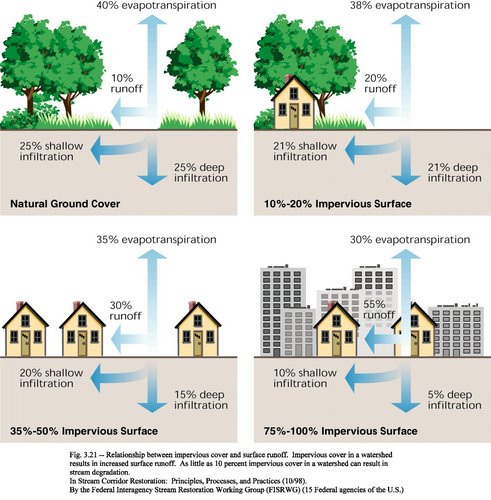Stormwater BMPS Introduction
Introduction
Water is undoubtedly one of the most vital natural resources. We need water to sustain our everyday lives. Water is also used daily in a variety of different capacities including cooking and cleaning. Yet water can also devastate communities when not properly managed. Flooding can destroy homes and bring Transportation systems to a halt. Effective stormwater management can minimize damages associated with flooding and prevent the degradation of aquatic resources.
Figure 1 describes the different mechanisms by which water is Transported. Each case in Figure 1 represents different degrees of imperviousness (i.e., hard surface). EvapoTranspiration describes the process by which plants and trees uptake water through their root systems or leaves and eventually release it back into the atmosphere. Water which is infiltrated into the soil may either become shallow or deep infiltration. Shallow infiltration provides soil with the necessary moisture to support the above plants and trees. Shallow infiltration may also travel through the soil and into downstream rivers and lakes. Deep infiltration will percolate through the soil and eventually recharge aquifers and groundwater sources. The upshot is that urbanization tends to increase runoff and makes stormwater management necessary. It also may decrease the recharge of aquifers that many outlying areas in the region depend on, although this threat is not understood as well.
Figure 1: Degrees of Imperviousness and its Effects on Stormwater Runoff
